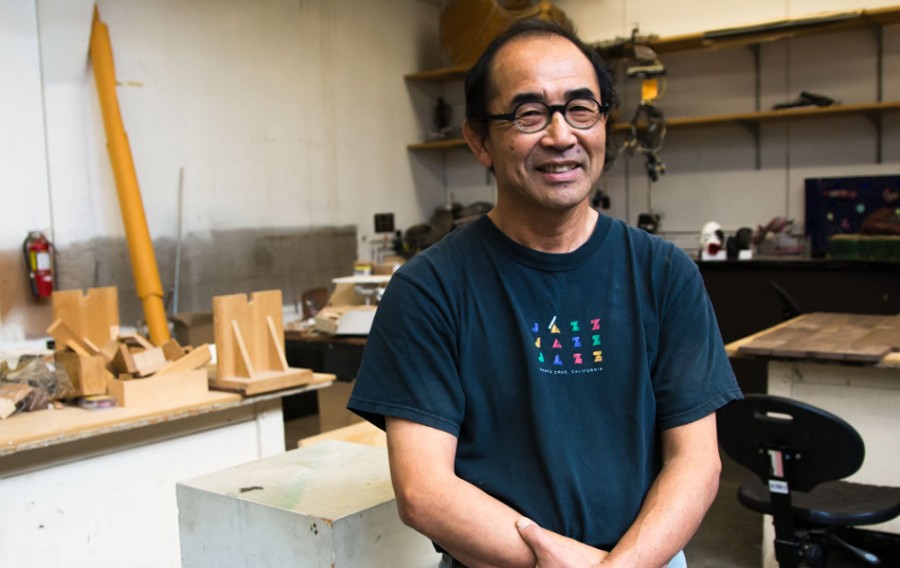De Anza professor sculpts his way to success
More stories from Imran Najam
Moto Ohtake teaches furniture design, three-dimensional design and sculpture at De Anza College. With 20 years of full-time professional experience, his teaching experiences extend as far back as 1992 in campuses such as Cabrillo College, Monterey Peninsula College and UCSC.
“Art-making is my passion. Making things is just me. I love making things,” said Ohtake as he inspected one of his student’s wood pieces. “I love using my hands.”
After receiving a degree in design from Nihon University in Tokyo, Ohtake moved to San Francisco to attend The Academy of Art and The Art Institute.
Ohtake graduated with a bachelor’s and master’s degree in fine arts in sculpture, and moved to Santa Cruz with his wife.
There, he learned wood-working techniques from his job as a racing yacht designer.
“It’s not like making cabinets or boxes. Nothing is square. You have to work with curved surfaces all the time,” Ohtake said.
His work expanded to interior architect, cabinet design and drafting designs.
“I learned all types of skills from my job,” Ohtake said. “And the materials I used were the materials that were available for my art work.”
This encouraged his early static sculptures of wood and layers of polyester enamel.
Ohtake then enrolled in bronze casting classes at Cabrillo College and became a technician.
“It was very beneficial and I met a lot of local artists who provided feedback for my art,” he said.
It was here that he began his main process of art creation: tungsten inert gas welding.
With this technique, Ohtake elevated his work to wind-driven kinetic structures.
The artist found himself waiting for the structure to move.
His wife was also an influence, asking him why didn’t he make his structures move.
“It captured my attention to stay there and see it move,” he said. “There is a pattern to it, but it’s also unpredictable.”
He then started to expand on his pieces’ structural complexity and size.
“I created a system to respond to nature, in a larger sense,” Ohtake said.
His first public art piece, a commissioned for De Anza campus, is titled “Stellar Motion #10,” found in the art quad.
Other work by Ohtake can be found at Fulton Playground in San Francisco, Atlanta Botanical Gardens and in Stockton, Ireland and Japan.
Ohtake initially taught when he was still only a technician, when professors were unavailable or on sick leave.
“It was gradual from my job as a technician,” Ohtake said.
He started instructing during summer sessions and integrated to full-time teaching in 1995.
“It’s fulfilling to see students respond positively to me sharing my knowledge,” Ohtake said. “I appreciate their originality. I am fed by it.”
His current project in the SOMA district of San Francisco, will be installed on a 45-foot-high pole at a surface station for a future subway.
“The area is very windy, and I have to work with two structural engineers, one from San Francisco Municipal Transportation,” Ohtake said.
The projected finish date is January 2016.
Ohtake said he has intentions to create kinetic sculptures that are hand-activated, not wind driven. This would make the works accessible in an exhibit, and not be limited to the outdoors.
“My sculptures are a form of self-expression but are non-representational,” Ohtake said. “You can look at the work and it means something different for each individual.”



